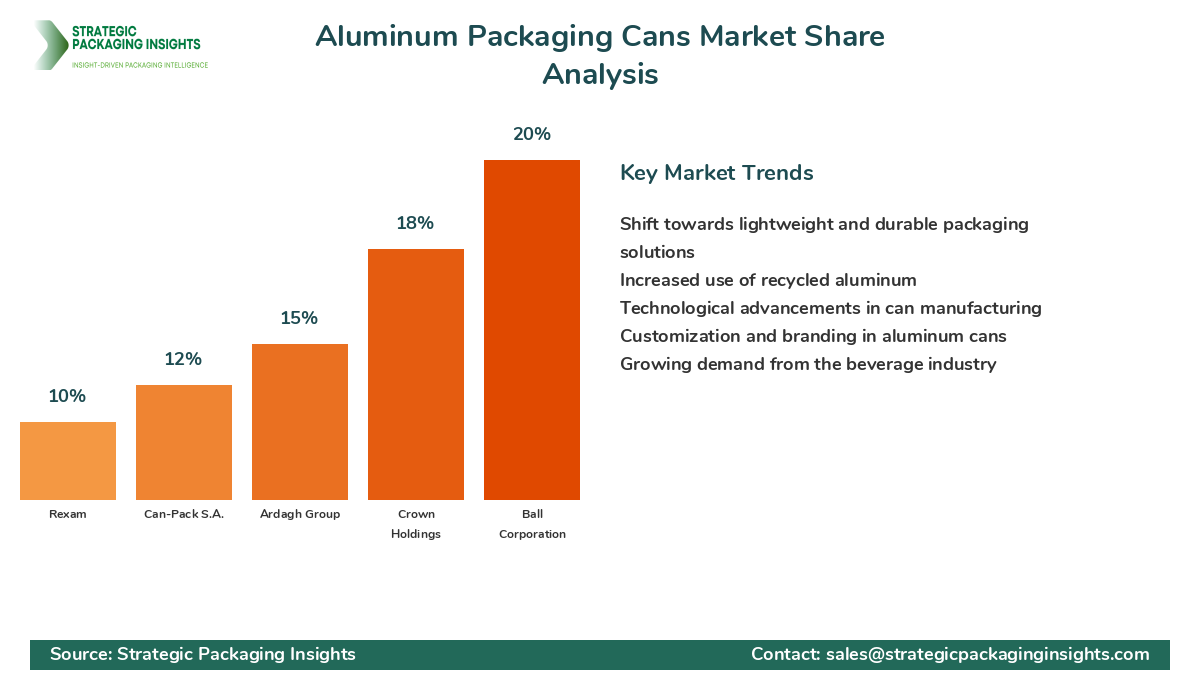- Home
- Beverage Packaging
- Aluminum Packaging Cans Market Size, Future Growth and Forecast 2033
Aluminum Packaging Cans Market Size, Future Growth and Forecast 2033
Aluminum Packaging Cans Market Segments - by Material Type (Recycled Aluminum, Virgin Aluminum), Application (Beverages, Food, Pharmaceuticals, Personal Care, Others), End-User (Beverage Industry, Food Industry, Pharmaceutical Industry, Personal Care Industry, Others), and Region (Asia Pacific, North America, Latin America, Europe, and Middle East & Africa) - Market Dynamics, Growth Opportunities, Strategic Drivers, and PESTLE Outlook (2025–2033)
Aluminum Packaging Cans Market Outlook
The aluminum packaging cans market was valued at $45 billion in 2024 and is projected to reach $70 billion by 2033, growing at a CAGR of 5.2% during the forecast period 2025-2033. This growth is driven by the increasing demand for sustainable and Recyclable Packaging solutions, as aluminum cans are highly recyclable and have a lower environmental impact compared to other packaging materials. The beverage industry, in particular, is a significant driver of this market, with a growing preference for aluminum cans due to their ability to preserve the taste and quality of beverages. Additionally, the rise in consumer awareness regarding environmental issues and the push for eco-friendly packaging solutions are further propelling the market growth.
Report Scope
| Attributes | Details |
| Report Title | Aluminum Packaging Cans Market Size, Future Growth and Forecast 2033 |
| Base Year | 2024 |
| Historic Data | 2017-2023 |
| Forecast Period | 2025-2033 |
| Number of Pages | 122 |
| Material Type | Recycled Aluminum, Virgin Aluminum |
| Application | Beverages, Food, Pharmaceuticals, Personal Care, Others |
| End-User | Beverage Industry, Food Industry, Pharmaceutical Industry, Personal Care Industry, Others |
| Region | Asia Pacific, North America, Latin America, Europe, Middle East & Africa |
| Customization Available | Yes* |
Key Highlights Aluminum Packaging Cans Market
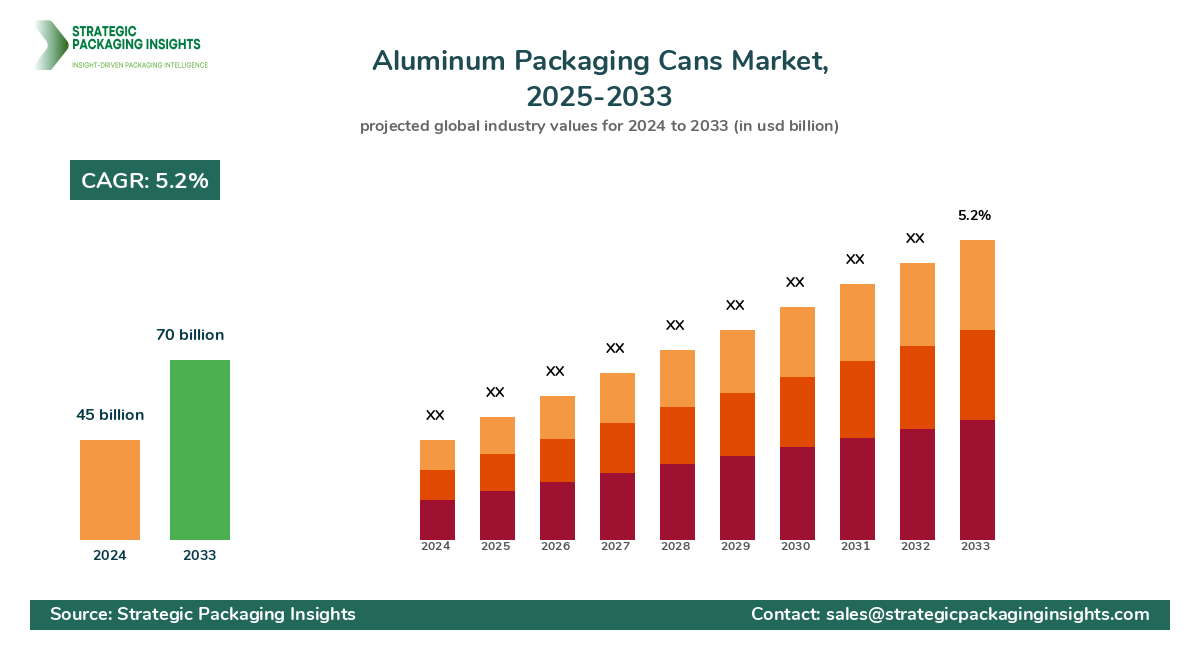
- The market is witnessing a shift towards lightweight and durable packaging solutions.
- Recycled aluminum is gaining traction due to its cost-effectiveness and environmental benefits.
- Technological advancements in can manufacturing are enhancing production efficiency.
- There is a growing trend of customization and branding in aluminum cans.
- The beverage industry remains the largest end-user segment.
- Asia Pacific is expected to witness the highest growth rate during the forecast period.
- Stringent regulations on plastic packaging are boosting the demand for aluminum cans.
- Innovations in can design are attracting consumer interest.
- Partnerships and collaborations among key players are driving market expansion.
Competitive Intelligence
The aluminum packaging cans market is highly competitive, with key players such as Ball Corporation, Crown Holdings, Ardagh Group, and Can-Pack S.A. leading the charge. Ball Corporation holds a significant market share due to its extensive product portfolio and strong distribution network. Crown Holdings is known for its innovative packaging solutions and has a robust presence in North America and Europe. Ardagh Group focuses on sustainability and has made significant investments in recycled aluminum production. Can-Pack S.A. is expanding its geographic reach with new manufacturing facilities in emerging markets. These companies are focusing on strategic partnerships and mergers to enhance their market position. While Ball Corporation and Crown Holdings are gaining ground with their innovation-driven strategies, smaller players are finding it challenging to compete on a global scale.
Regional Market Intelligence of Aluminum Packaging Cans
In North America, the aluminum packaging cans market is valued at $15 billion and is expected to grow steadily due to the high consumption of canned beverages and food. The region's focus on sustainability and recycling initiatives is a major growth driver. Europe, with a market size of $12 billion, is witnessing growth driven by stringent regulations on plastic use and a strong emphasis on eco-friendly packaging. The Asia-Pacific region, valued at $18 billion, is projected to experience the highest growth rate, fueled by increasing urbanization, rising disposable incomes, and a growing preference for convenient packaging solutions. Latin America and the Middle East & Africa, with market sizes of $5 billion and $3 billion respectively, are also showing positive growth trends, driven by expanding beverage industries and increasing consumer awareness about Sustainable Packaging.
Top Countries Insights in Aluminum Packaging Cans
The United States, with a market size of $10 billion and a CAGR of 4%, is a leading player in the aluminum packaging cans market, driven by high consumption of canned beverages and strong recycling infrastructure. China, with a market size of $8 billion and a CAGR of 6%, is experiencing rapid growth due to increasing urbanization and demand for sustainable packaging. Germany, valued at $5 billion with a CAGR of 3%, is driven by stringent environmental regulations and a strong focus on recycling. Brazil, with a market size of $3 billion and a CAGR of 5%, is seeing growth due to the expanding beverage industry and increasing consumer awareness. India, with a market size of $2 billion and a CAGR of 7%, is emerging as a key market due to rising disposable incomes and a shift towards eco-friendly packaging solutions.
Aluminum Packaging Cans Market Segments Insights
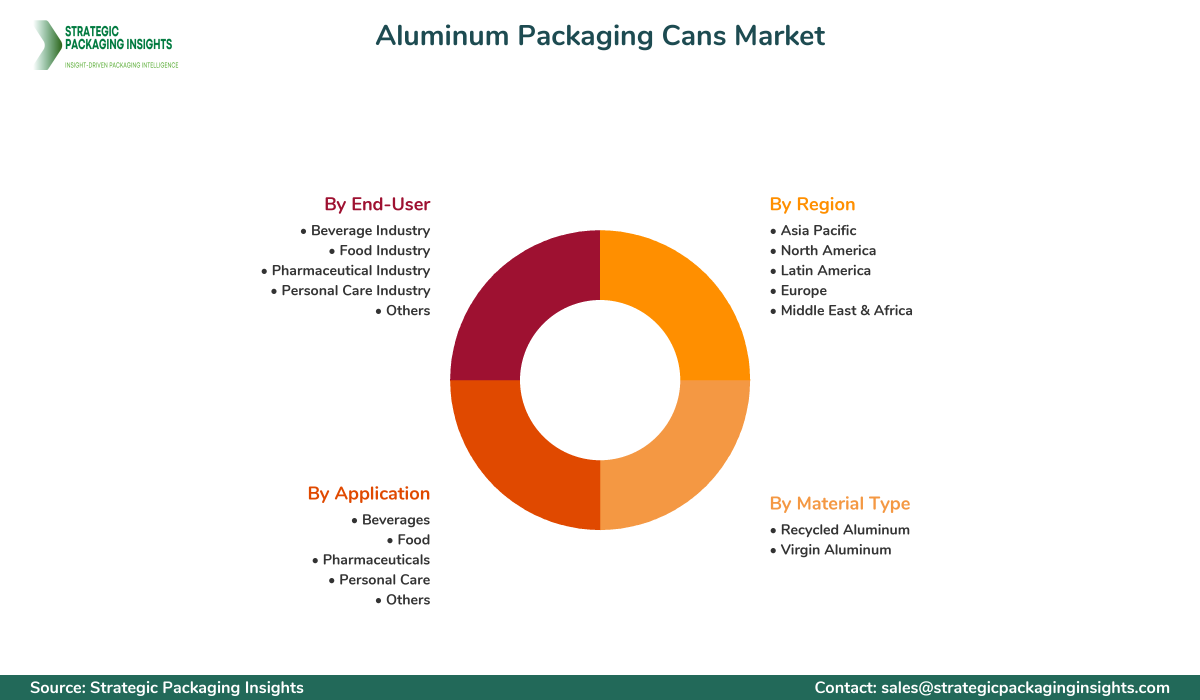
Material Type Analysis
The aluminum packaging cans market is segmented by material type into recycled aluminum and virgin aluminum. Recycled aluminum is gaining popularity due to its cost-effectiveness and lower environmental impact. The use of recycled aluminum reduces energy consumption and greenhouse gas emissions, making it a preferred choice for environmentally conscious consumers and companies. Virgin aluminum, while more expensive, offers superior quality and durability, making it suitable for premium packaging solutions. The demand for virgin aluminum is driven by industries that require high-quality packaging to maintain product integrity.
Application Analysis
The application segment of the aluminum packaging cans market includes beverages, food, pharmaceuticals, personal care, and others. The beverage industry is the largest application segment, driven by the high consumption of canned beverages such as soft drinks, beer, and energy drinks. Aluminum cans are preferred in the beverage industry due to their ability to preserve the taste and quality of the product. The food industry is also a significant segment, with increasing demand for canned food products due to their convenience and long shelf life. The pharmaceutical and personal care industries are adopting aluminum cans for their packaging needs due to the material's protective properties and recyclability.
End-User Analysis
The end-user segment of the aluminum packaging cans market includes the beverage industry, food industry, pharmaceutical industry, personal care industry, and others. The beverage industry is the largest end-user, accounting for a significant share of the market. The industry's demand for aluminum cans is driven by the need for lightweight, durable, and recyclable packaging solutions. The food industry is also a major end-user, with increasing demand for canned food products. The pharmaceutical and personal care industries are adopting aluminum cans for their packaging needs due to the material's protective properties and recyclability. The demand from these industries is expected to drive market growth during the forecast period.
Regional Analysis
The regional analysis of the aluminum packaging cans market highlights the growth potential in different regions. North America and Europe are mature markets with a strong focus on sustainability and recycling initiatives. The Asia-Pacific region is expected to witness the highest growth rate, driven by increasing urbanization, rising disposable incomes, and a growing preference for convenient packaging solutions. Latin America and the Middle East & Africa are also showing positive growth trends, driven by expanding beverage industries and increasing consumer awareness about sustainable packaging. The regional analysis provides insights into the growth drivers and challenges in each region, helping companies to strategize their market entry and expansion plans.
The market share analysis of the aluminum packaging cans market reveals that Ball Corporation, Crown Holdings, and Ardagh Group are the leading players, holding significant shares due to their extensive product portfolios and strong distribution networks. These companies are focusing on innovation and sustainability to maintain their market positions. Smaller players are finding it challenging to compete on a global scale due to limited resources and geographic reach. The market share distribution affects pricing, innovation, and partnerships, with leading companies setting the trends and smaller players following suit. The competitive landscape is dynamic, with companies constantly striving to gain a competitive edge through strategic partnerships and mergers.
Aluminum Packaging Cans Market Segments
The Aluminum Packaging Cans market has been segmented on the basis of
Material Type
- Recycled Aluminum
- Virgin Aluminum
Application
- Beverages
- Food
- Pharmaceuticals
- Personal Care
- Others
End-User
- Beverage Industry
- Food Industry
- Pharmaceutical Industry
- Personal Care Industry
- Others
Region
- Asia Pacific
- North America
- Latin America
- Europe
- Middle East & Africa
Primary Interview Insights
What are the main drivers of growth in the aluminum packaging cans market?
How is the use of recycled aluminum impacting the market?
Which region is expected to witness the highest growth rate?
What challenges do smaller players face in the market?
How are companies addressing sustainability in their operations?
Latest Reports

The Hot Melt Glue Labeler market was valued at $1.2 billion in 2024 and is projected to reach $2.3 billion by 2033, growing at a CAGR of 6.5% during the forecast period 2025–2033.

The Ethical Label market was valued at $1.5 billion in 2024 and is projected to reach $3.2 billion by 2033, growing at a CAGR of 8.5% during the forecast period 2025–2033.

The Packaging Tensioner market was valued at $1.2 billion in 2024 and is projected to reach $2.3 billion by 2033, growing at a CAGR of 6.5% during the forecast period 2025–2033.
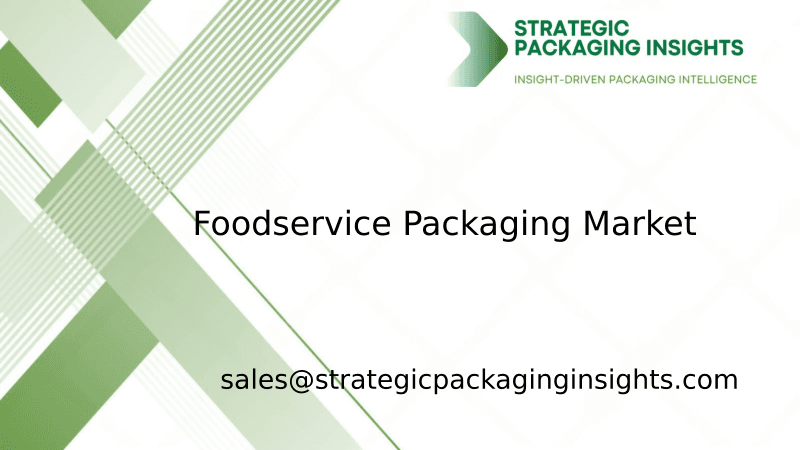
The foodservice packaging market was valued at $120 billion in 2024 and is projected to reach $180 billion by 2033, growing at a CAGR of 4.5% during the forecast period 2025–2033.

The nano-enabled packaging market was valued at $15.2 billion in 2024 and is projected to reach $35.6 billion by 2033, growing at a CAGR of 9.5% during the forecast period 2025–2033.
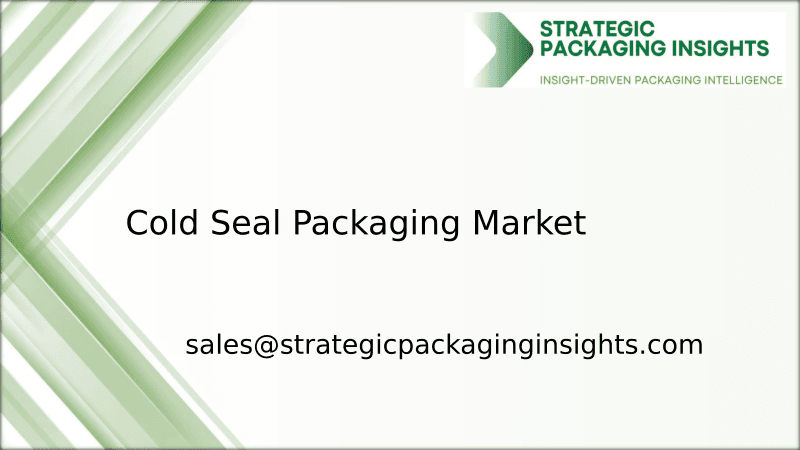
The Cold Seal Packaging market was valued at $1.5 billion in 2024 and is projected to reach $2.3 billion by 2033, growing at a CAGR of 4.8% during the forecast period 2025–2033.

The Transparent Barrier Packaging Films market was valued at $12.5 billion in 2024 and is projected to reach $20.3 billion by 2033, growing at a CAGR of 5.8% during the forecast period 2025–2033.

The Flatback Tape market was valued at $2.5 billion in 2024 and is projected to reach $4.1 billion by 2033, growing at a CAGR of 5.8% during the forecast period 2025–2033.
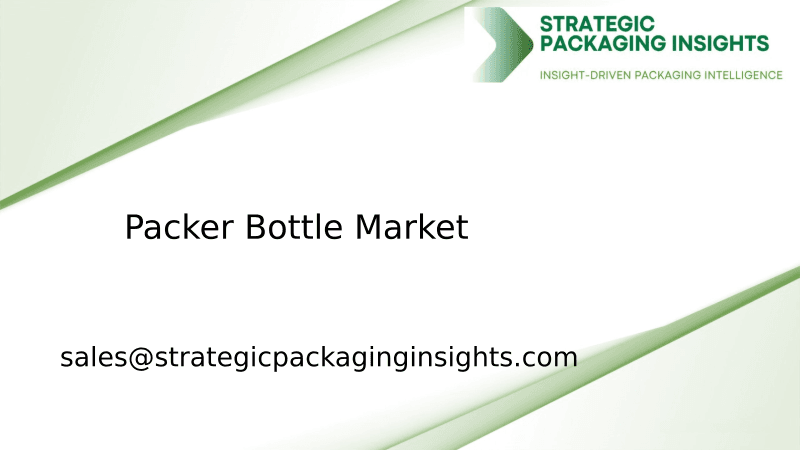
The packer bottle market was valued at $3.5 billion in 2024 and is projected to reach $5.8 billion by 2033, growing at a CAGR of 5.2% during the forecast period 2025–2033.
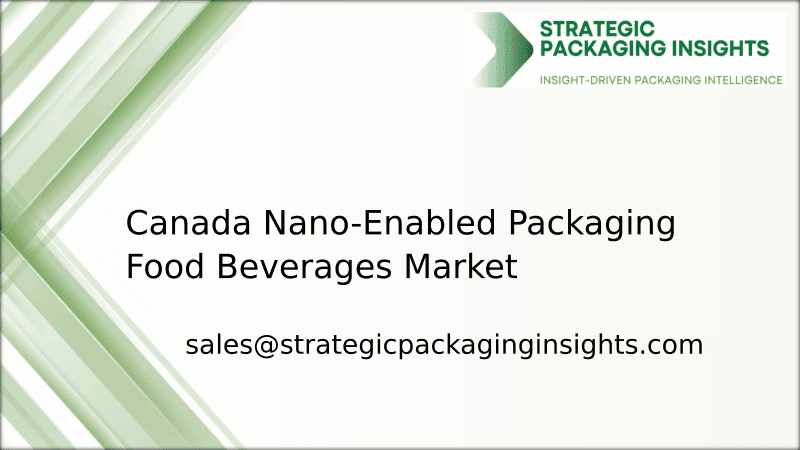
The Canada Nano-Enabled Packaging Food Beverages market was valued at $1.2 billion in 2024 and is projected to reach $3.5 billion by 2033, growing at a CAGR of 12.5% during the forecast period 2025–2033.
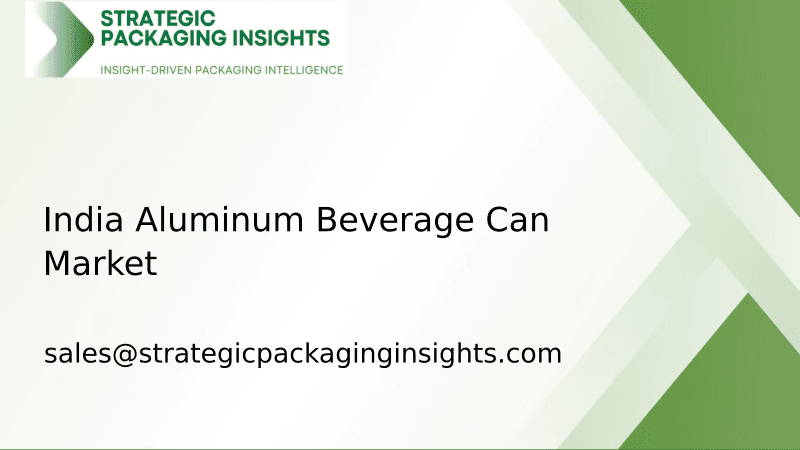
The India Aluminum Beverage Can market was valued at $1.2 billion in 2024 and is projected to reach $2.5 billion by 2033, growing at a CAGR of 8.5% during the forecast period 2025–2033.
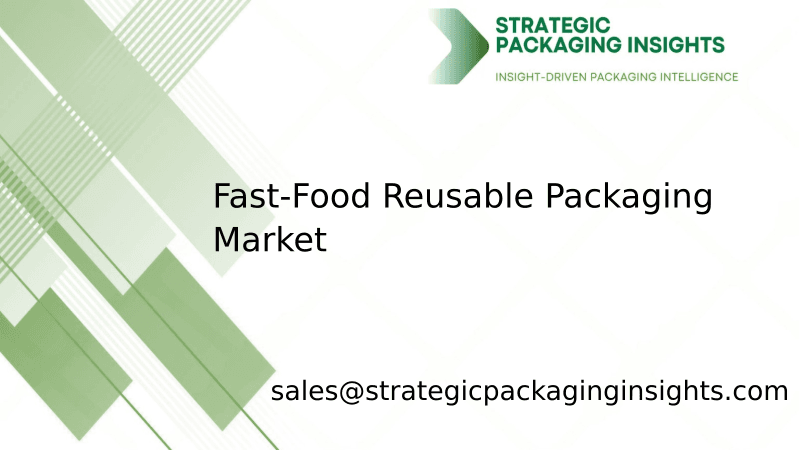
The fast-food reusable packaging market was valued at $1.2 billion in 2024 and is projected to reach $3.5 billion by 2033, growing at a CAGR of 12.5% during the forecast period 2025–2033.
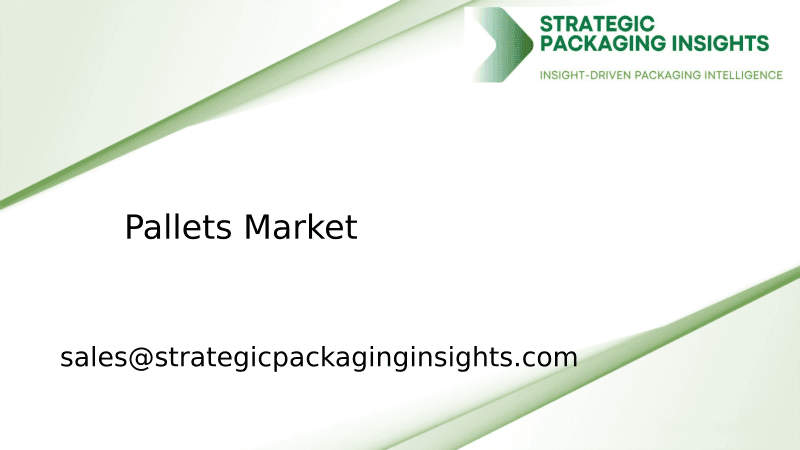
The pallets market was valued at $59.91 billion in 2024 and is projected to reach $88.69 billion by 2033, growing at a CAGR of 4.5% during the forecast period 2025–2033.

The lamination adhesives market was valued at $2.5 billion in 2024 and is projected to reach $4.1 billion by 2033, growing at a CAGR of 5.8% during the forecast period 2025–2033.

The garment packing machine market was valued at $1.2 billion in 2024 and is projected to reach $2.5 billion by 2033, growing at a CAGR of 8.5% during the forecast period 2025–2033.
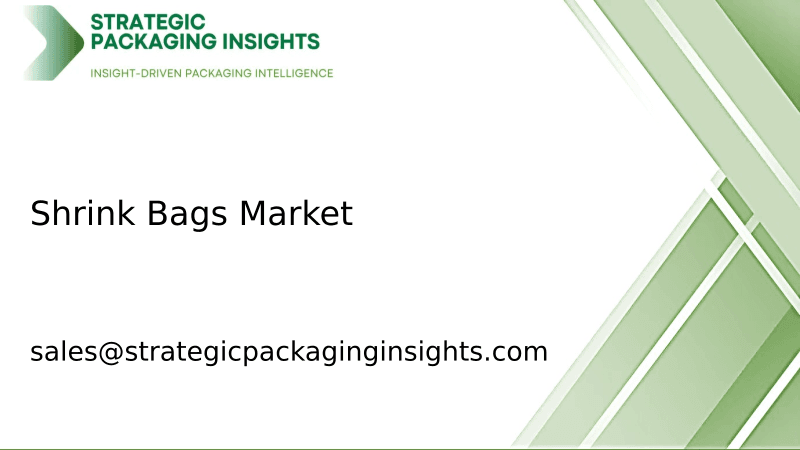
The shrink bags market was valued at $3.5 billion in 2024 and is projected to reach $5.8 billion by 2033, growing at a CAGR of 5.2% during the forecast period 2025–2033.

The beverage packaging market was valued at $128 billion in 2024 and is projected to reach $186 billion by 2033, growing at a CAGR of 4.2% during the forecast period 2025–2033.

The North America Freight and Logistics market was valued at $1,200 billion in 2024 and is projected to reach $1,800 billion by 2033, growing at a CAGR of 4.5% during the forecast period 2025–2033.

The Anti-Counterfeiting Packaging market was valued at $105 billion in 2024 and is projected to reach $182 billion by 2033, growing at a CAGR of 6.5% during the forecast period 2025–2033.

The Active and Modified Atmospheric Packaging market was valued at $15.2 billion in 2024 and is projected to reach $25.8 billion by 2033, growing at a CAGR of 6.5% during the forecast period 2025–2033.

The molded fiber packaging market was valued at $7.5 billion in 2024 and is projected to reach $12.3 billion by 2033, growing at a CAGR of 5.8% during the forecast period 2025–2033.

The micro packaging market was valued at $1.2 billion in 2024 and is projected to reach $2.5 billion by 2033, growing at a CAGR of 8.5% during the forecast period 2025–2033.

The Anti-counterfeit Pharmaceuticals Packaging market was valued at $80 billion in 2024 and is projected to reach $150 billion by 2033, growing at a CAGR of 7.5% during the forecast period 2025–2033.
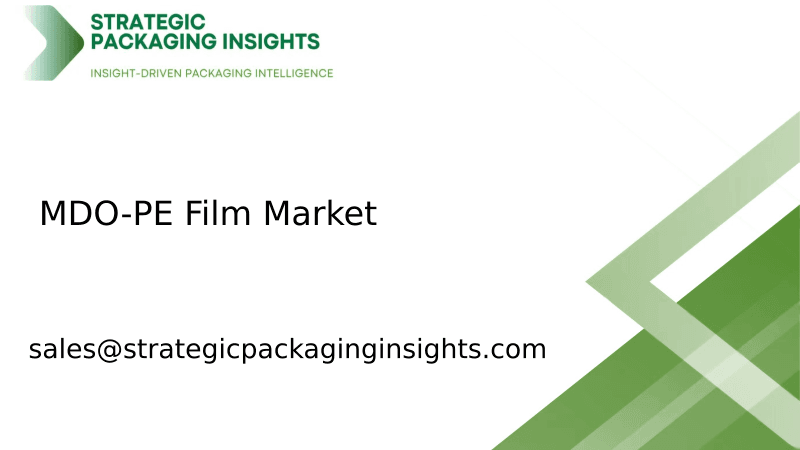
The MDO-PE Film market was valued at $3.5 billion in 2024 and is projected to reach $5.8 billion by 2033, growing at a CAGR of 5.2% during the forecast period 2025–2033.
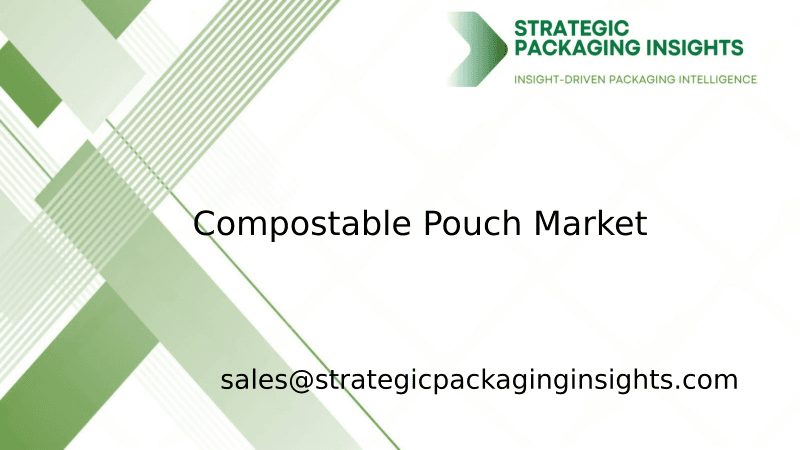
The compostable pouch market was valued at $1.2 billion in 2024 and is projected to reach $3.5 billion by 2033, growing at a CAGR of 12.5% during the forecast period 2025–2033.

The Hot Melt Glue Labeler market was valued at $1.2 billion in 2024 and is projected to reach $2.3 billion by 2033, growing at a CAGR of 6.5% during the forecast period 2025–2033.

The Ethical Label market was valued at $1.5 billion in 2024 and is projected to reach $3.2 billion by 2033, growing at a CAGR of 8.5% during the forecast period 2025–2033.

The Packaging Tensioner market was valued at $1.2 billion in 2024 and is projected to reach $2.3 billion by 2033, growing at a CAGR of 6.5% during the forecast period 2025–2033.

The foodservice packaging market was valued at $120 billion in 2024 and is projected to reach $180 billion by 2033, growing at a CAGR of 4.5% during the forecast period 2025–2033.

The nano-enabled packaging market was valued at $15.2 billion in 2024 and is projected to reach $35.6 billion by 2033, growing at a CAGR of 9.5% during the forecast period 2025–2033.

The Cold Seal Packaging market was valued at $1.5 billion in 2024 and is projected to reach $2.3 billion by 2033, growing at a CAGR of 4.8% during the forecast period 2025–2033.

The Transparent Barrier Packaging Films market was valued at $12.5 billion in 2024 and is projected to reach $20.3 billion by 2033, growing at a CAGR of 5.8% during the forecast period 2025–2033.

The Flatback Tape market was valued at $2.5 billion in 2024 and is projected to reach $4.1 billion by 2033, growing at a CAGR of 5.8% during the forecast period 2025–2033.

The packer bottle market was valued at $3.5 billion in 2024 and is projected to reach $5.8 billion by 2033, growing at a CAGR of 5.2% during the forecast period 2025–2033.

The Canada Nano-Enabled Packaging Food Beverages market was valued at $1.2 billion in 2024 and is projected to reach $3.5 billion by 2033, growing at a CAGR of 12.5% during the forecast period 2025–2033.

The India Aluminum Beverage Can market was valued at $1.2 billion in 2024 and is projected to reach $2.5 billion by 2033, growing at a CAGR of 8.5% during the forecast period 2025–2033.

The fast-food reusable packaging market was valued at $1.2 billion in 2024 and is projected to reach $3.5 billion by 2033, growing at a CAGR of 12.5% during the forecast period 2025–2033.

The pallets market was valued at $59.91 billion in 2024 and is projected to reach $88.69 billion by 2033, growing at a CAGR of 4.5% during the forecast period 2025–2033.

The lamination adhesives market was valued at $2.5 billion in 2024 and is projected to reach $4.1 billion by 2033, growing at a CAGR of 5.8% during the forecast period 2025–2033.

The garment packing machine market was valued at $1.2 billion in 2024 and is projected to reach $2.5 billion by 2033, growing at a CAGR of 8.5% during the forecast period 2025–2033.

The shrink bags market was valued at $3.5 billion in 2024 and is projected to reach $5.8 billion by 2033, growing at a CAGR of 5.2% during the forecast period 2025–2033.

The beverage packaging market was valued at $128 billion in 2024 and is projected to reach $186 billion by 2033, growing at a CAGR of 4.2% during the forecast period 2025–2033.

The North America Freight and Logistics market was valued at $1,200 billion in 2024 and is projected to reach $1,800 billion by 2033, growing at a CAGR of 4.5% during the forecast period 2025–2033.

The Anti-Counterfeiting Packaging market was valued at $105 billion in 2024 and is projected to reach $182 billion by 2033, growing at a CAGR of 6.5% during the forecast period 2025–2033.

The Active and Modified Atmospheric Packaging market was valued at $15.2 billion in 2024 and is projected to reach $25.8 billion by 2033, growing at a CAGR of 6.5% during the forecast period 2025–2033.

The molded fiber packaging market was valued at $7.5 billion in 2024 and is projected to reach $12.3 billion by 2033, growing at a CAGR of 5.8% during the forecast period 2025–2033.

The micro packaging market was valued at $1.2 billion in 2024 and is projected to reach $2.5 billion by 2033, growing at a CAGR of 8.5% during the forecast period 2025–2033.

The Anti-counterfeit Pharmaceuticals Packaging market was valued at $80 billion in 2024 and is projected to reach $150 billion by 2033, growing at a CAGR of 7.5% during the forecast period 2025–2033.

The MDO-PE Film market was valued at $3.5 billion in 2024 and is projected to reach $5.8 billion by 2033, growing at a CAGR of 5.2% during the forecast period 2025–2033.

The compostable pouch market was valued at $1.2 billion in 2024 and is projected to reach $3.5 billion by 2033, growing at a CAGR of 12.5% during the forecast period 2025–2033.
